The gardens at Everdon Hall: How an abandoned walled garden was turned into a secluded oasis of outdoor beauty
The gardens at Everdon Hall, Northamptonshire — the home of Charles and Caroline Coaker —show off a clean, green structure balanced by romantic billowy planting. Non Morris takes a look at this beautifully judged garden; photographs by Val Corbett for Country Life.

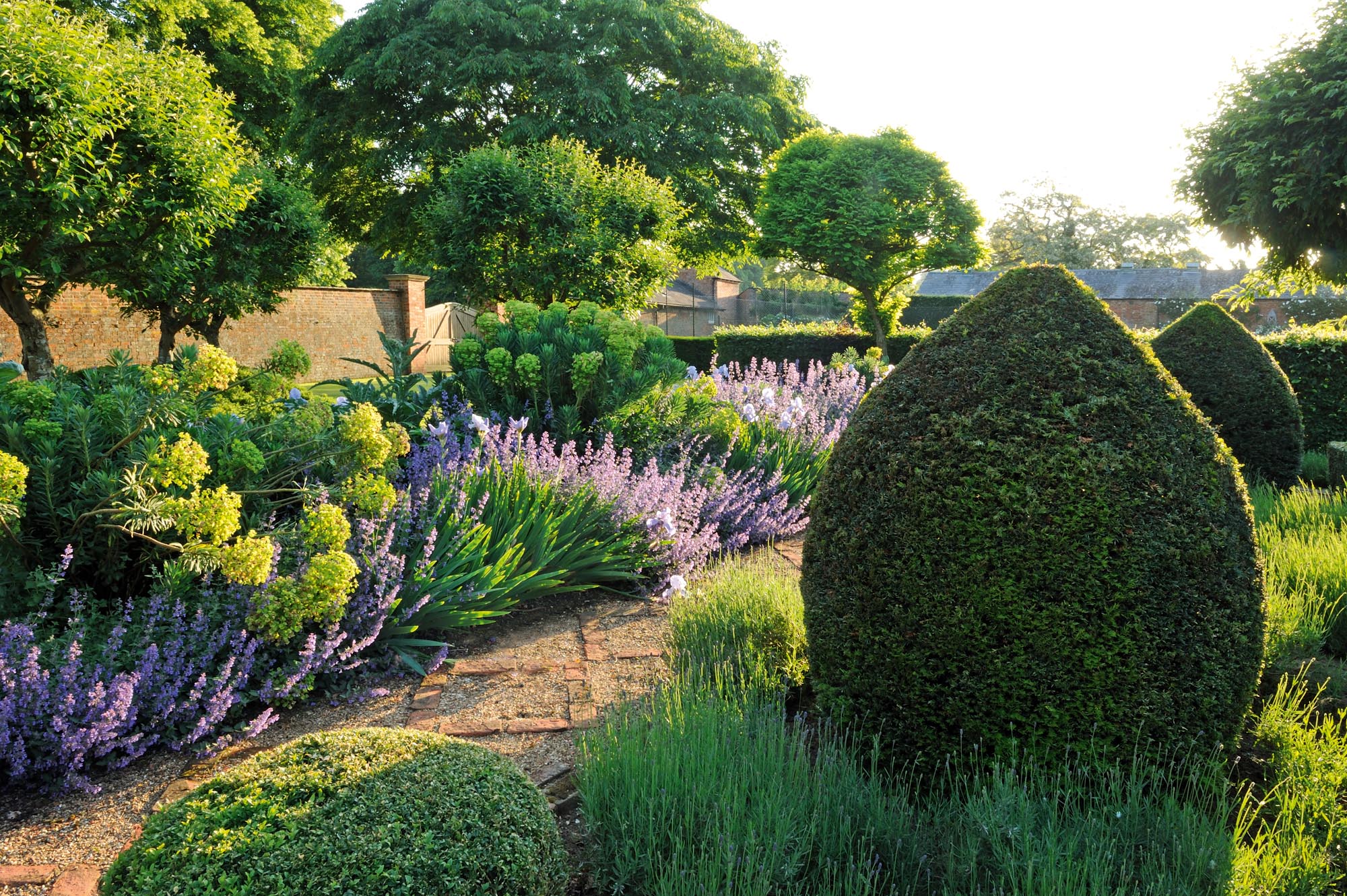
The kitchen window of Everdon Hall looks out over a spreading magnolia tree that marks the visitor’s arrival to the house. When Charles and Caroline Coaker took on the ‘almost derelict’ house 25 years ago, renovations were delayed by planning issues, so they decided to start on the garden before they moved in and to enjoy the opportunity offered by an almost blank canvas: a few mature trees and an abandoned walled garden.
The Coakers asked garden designer Angel Collins to help them, starting with the walled garden, which had the advantage of being far enough away from the house not to clash with building works. Mrs Collins has returned at regular intervals over the years to develop other parts of the 4½-acre garden that gently encircles the house with views onto glorious parkland. ‘This is really why we fell in love with this place — everywhere you look, there are views to rolling hills,’ says Mrs Coaker.
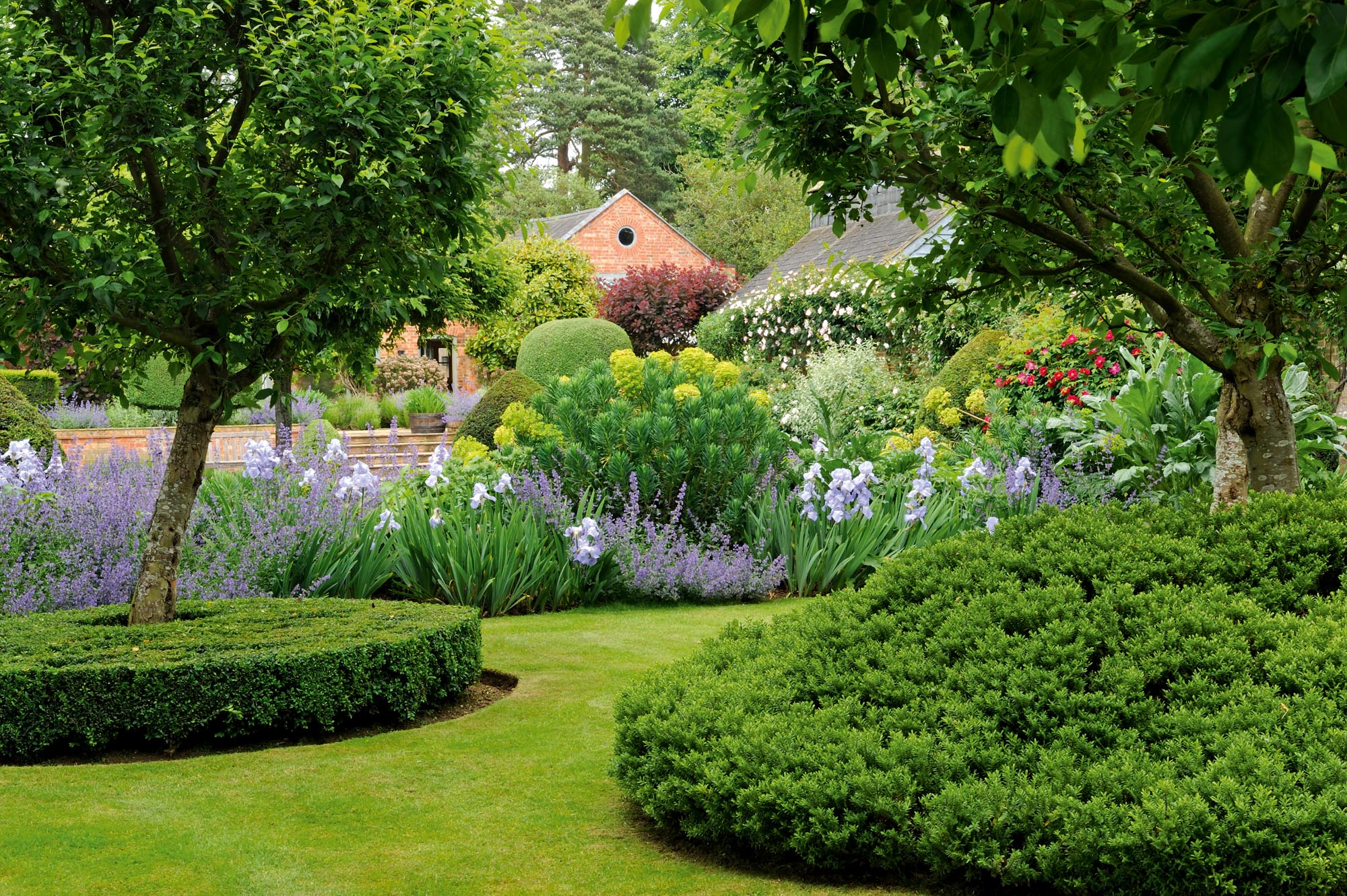
The new owner of Everdon Hall had a good idea of the style she had in mind: ‘I wanted the garden to be comfortable and soft, almost Italian. I love green; I wouldn’t mind if there was nothing else.’ Her brief for the key elements of the walled garden was even clearer. ‘I wanted a tennis court and a swimming pool to entice the children to the new house, but I didn’t want a kitchen garden. Nowadays, they are all terrible foodies, but when they were young all they would eat were frozen peas!’
Mrs Collins added clever, serpentine hedges of clipped beech and yew to screen gently the tennis court, break up the straight lines and create a series of welcoming, intimate spaces. An arched doorway leads to a grass path, flanked by clipped weeping silver pear trees that emerge from swathes of soft meadow-like grass dotted with bobbing allium heads, pheasant’s-eye narcissus and blue camassia.
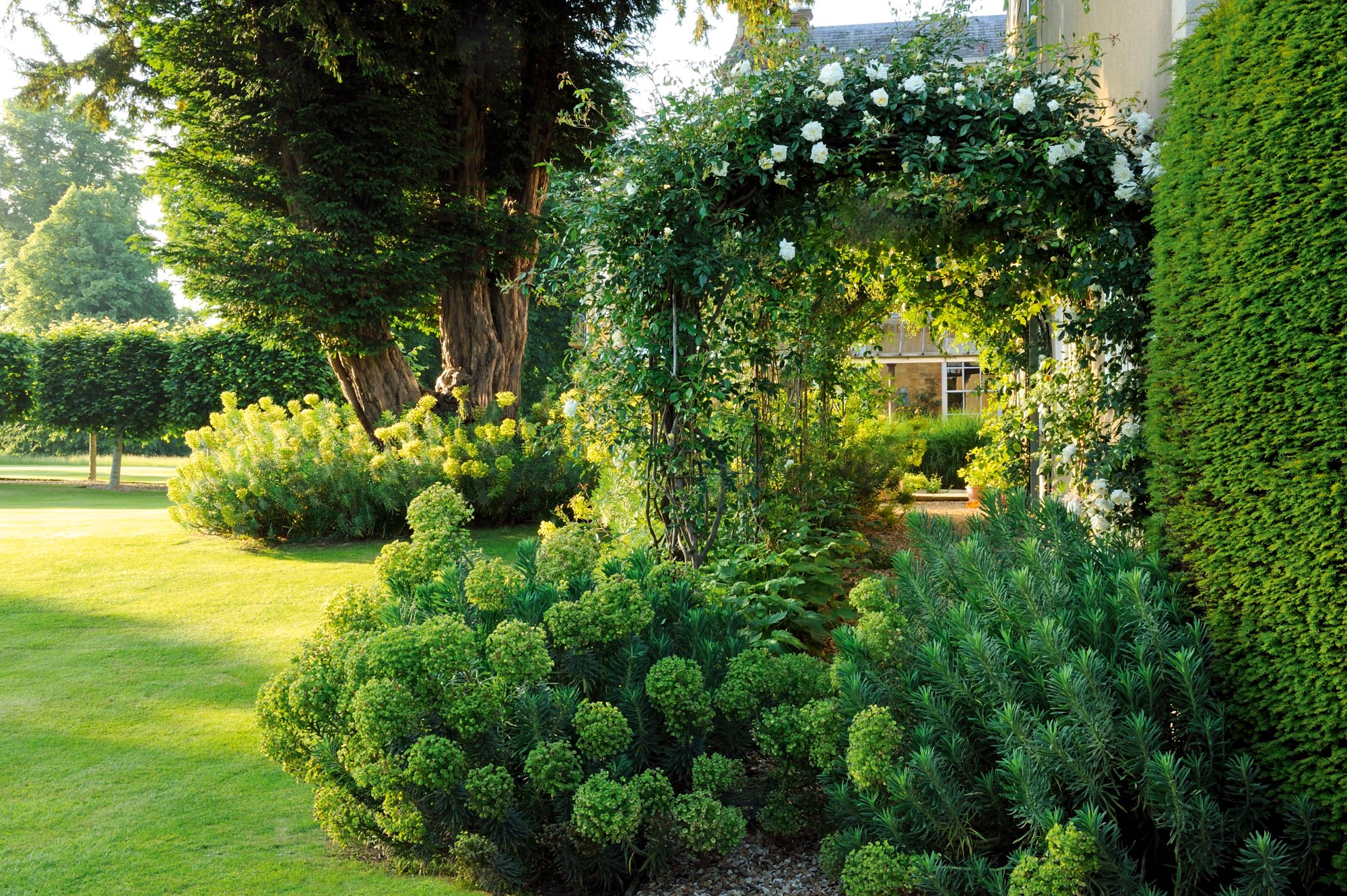
At the far end, there is a wonderful ‘orchard’ of clipped and unclipped crab apples, underplanted with low circular platforms of box or sculptural mounds of Hebe rakaiensis. The crab apples include Malus transitoria, which is left unclipped to spread its cloud of white blossom in May.
These are followed by tiny fruit, which sit like yellow pearls along its outstretched branches. The very pretty M. hupehensis, with red fruit and excellent autumn colour, is gently shaped into rounded heads. Nearby, cushions of box and beehives of yew provide a wonderful architectural contrast to scented drifts of lavender, catmint and the clear pale blue of Iris ‘Jane Phillips’.
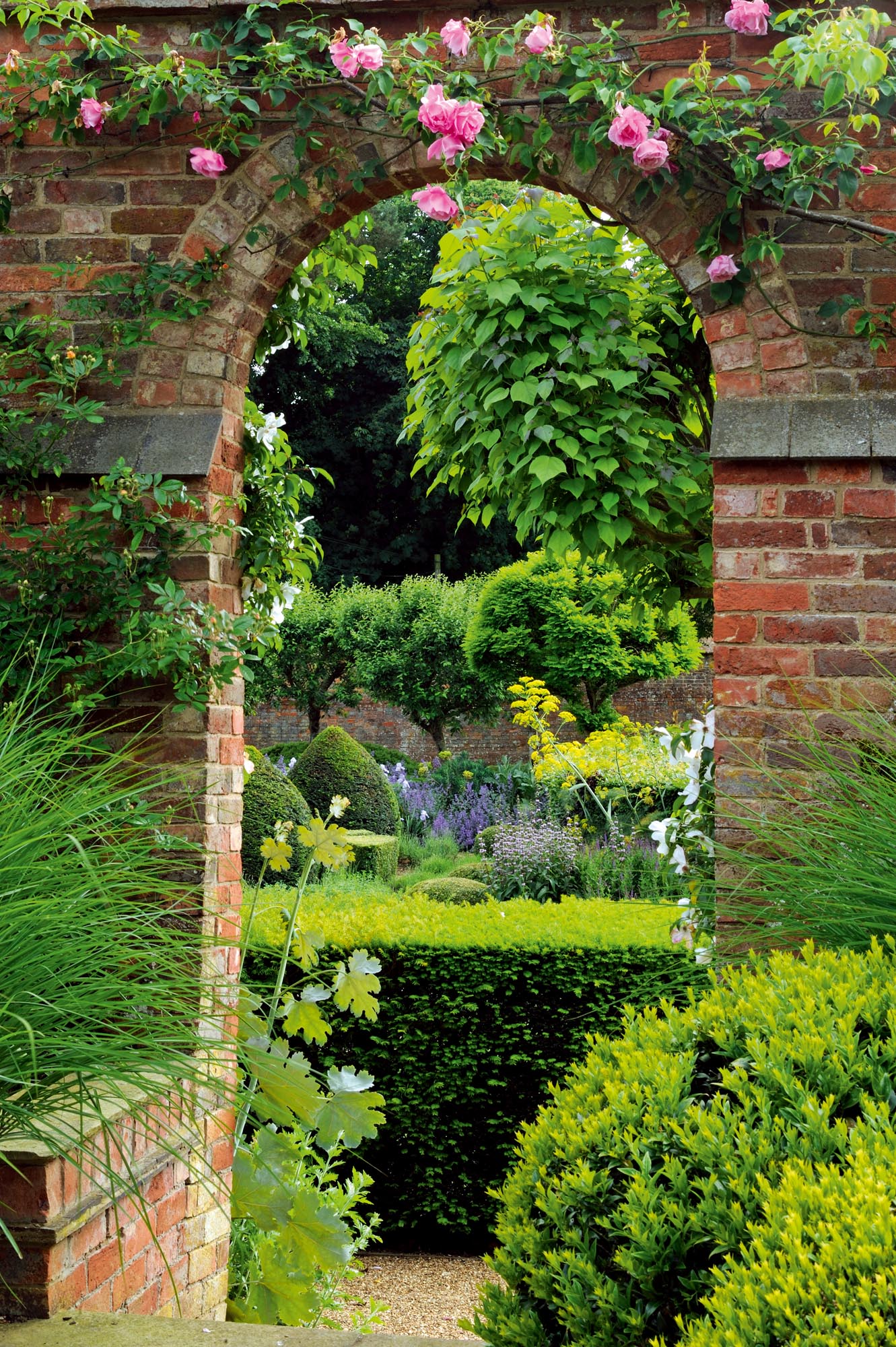
There are roses everywhere. In the walled garden, the pink-flushed, creamy-white pom-poms of climber Rosa ‘Félicité Perpétue’ is trained behind the scented R. ‘Snowdon’ and, opposite, there is an entire wall of the wonderful single white R. ‘Cooperi’, which has glossy semi-evergreen foliage that looks good most of the year. The dry soil beneath is simply and effectively planted with a mass of Allium ‘Purple Sensation’, followed by Macleaya cordata, the blue-grey, almost fig-like leaves of which will stand well into autumn.
Exquisite houses, the beauty of Nature, and how to get the most from your life, straight to your inbox.
Straggly island beds of roses were rationalised and turned into a bespoke Rose Garden, where they joined blooms such as ‘John Clare’, ‘Gertrude Jekyll’ and Mrs Coaker’s favourite English rose Eglantyne, all grown in simple, wooden-framed raised beds underplanted with catmint, geranium and gorgeous sheaves of irises — the reliable pale-blue ‘Jane Phillips’ and the dusky purple-black ‘Sable’.
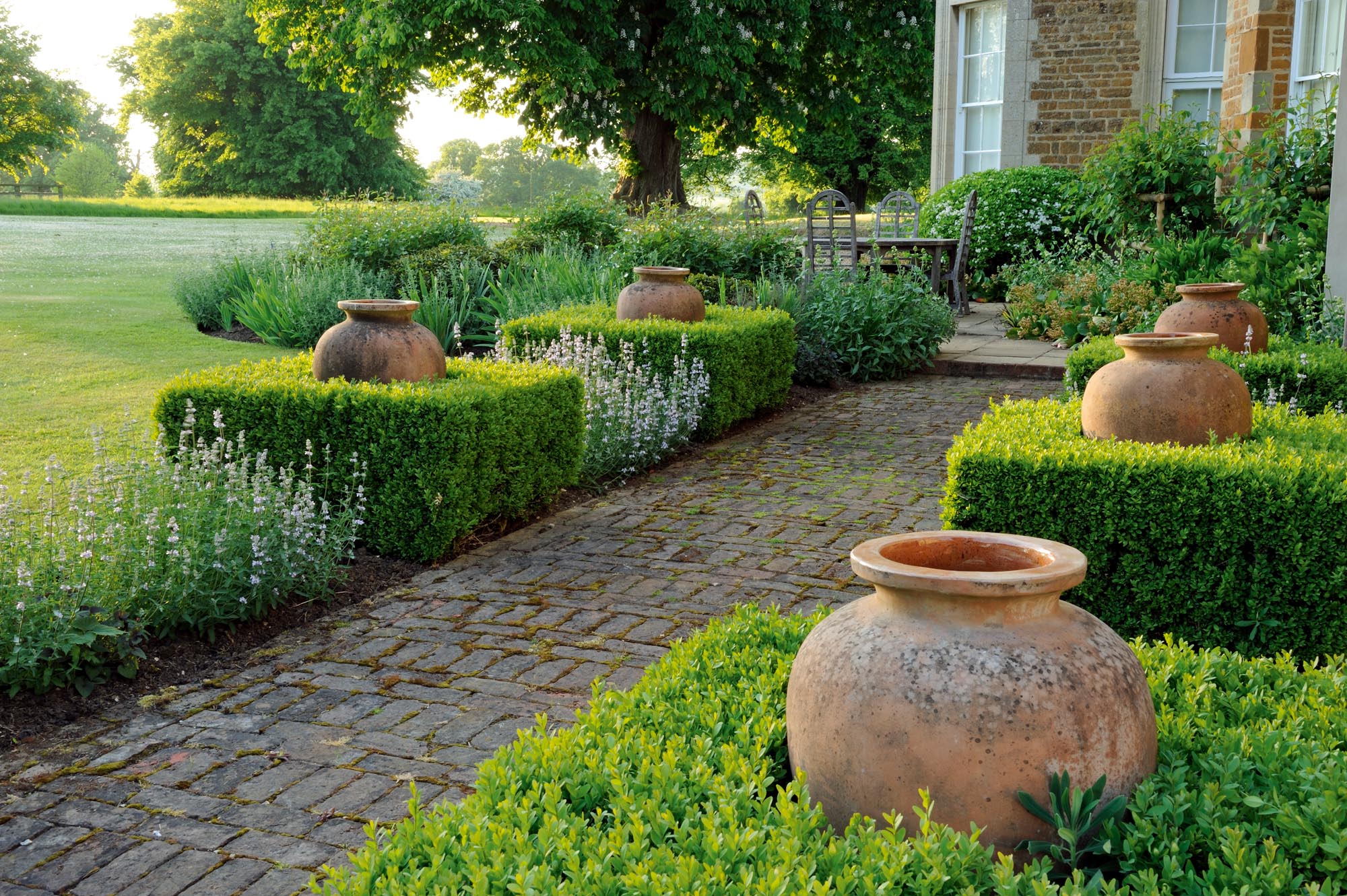
Near the house, around the last of a series of dining terraces, are mounds of Rosa Wind-rush an unusual free-flowering semi-double of palest yellow with distinctive yellow stamens. This is planted in an easy combination with Sisyrinchium striatum, white valerian, rosemary and other herbs in a rounded bed that echoes the shape of a bay window.
The soft planting contrasts well with the smart terracotta olive-oil jars nestling in box cubes, which flank a brick path in between lacy, aromatic mounds of pale Calamintha nepeta subsp. nepeta ‘Blue Cloud’. At right angles to the path is a pleached-lime avenue that leads the eye out into the parkland beyond.
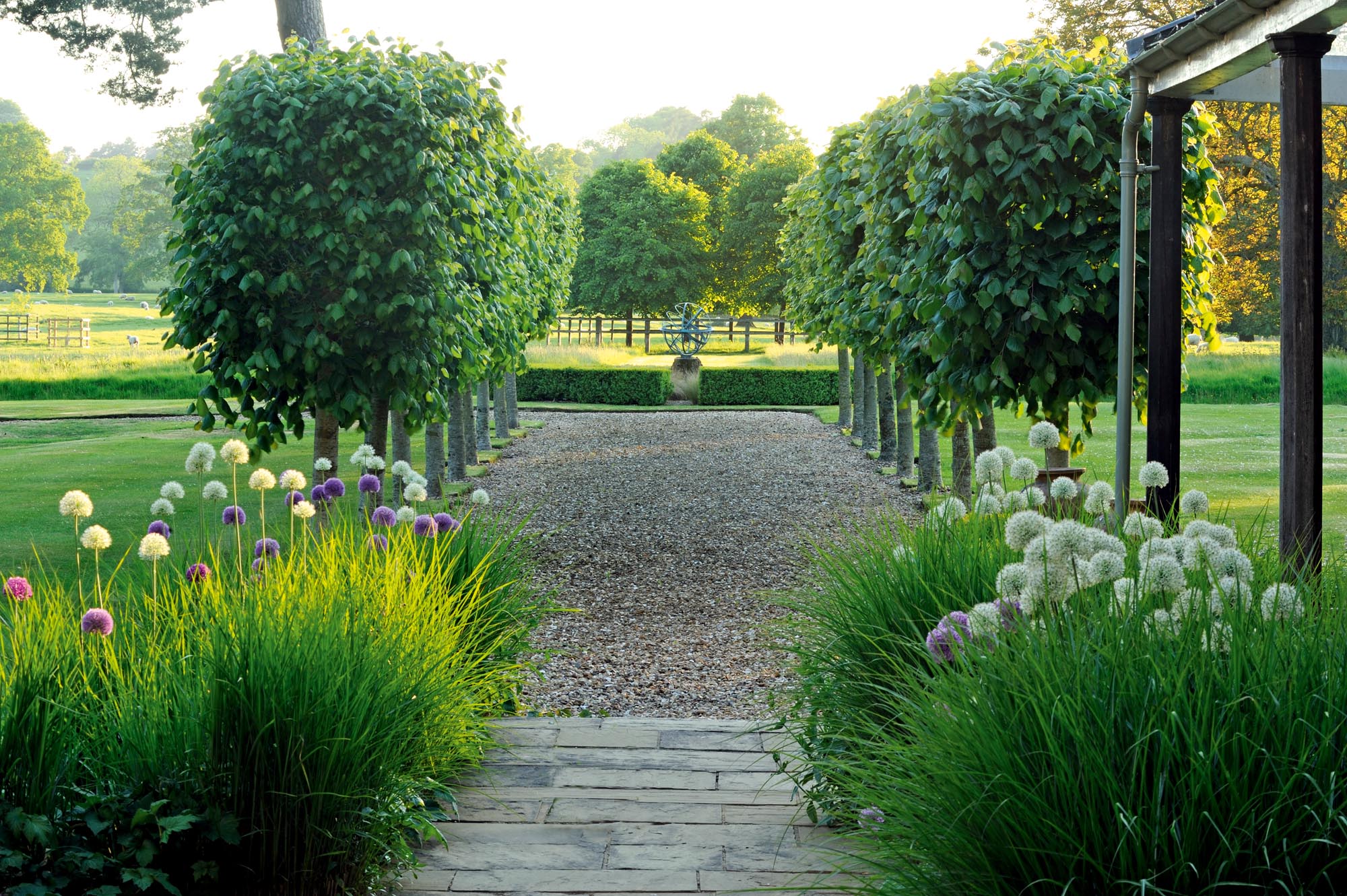
In the front garden, Mrs Collins has broken up the generous lawn with four broad beds laid out with clipped yew, box and standard Portuguese laurel. This generous use of architectural, often evergreen planting as a backdrop to a full and romantic palette of bulbs, perennials and grasses for spring and summer is key to Mrs Collins’s approach.
Here, in the front border, she uses the rich-blue Geranium ‘Orion’, the frothy lime-green Alchemilla mollis and three pale hydrangeas: the green-white H. arborescens ‘Annabelle’, the lime fading to cream H. paniculata ‘Limelight’ and clean-white H. macrophylla ‘Madame Emile Mouillière’, which ages to a gentle pink. Stars of the show, however, are the majestic dancing mounds of golden oats, Stipa gigantea, the arching stems of which can reach 8ft.
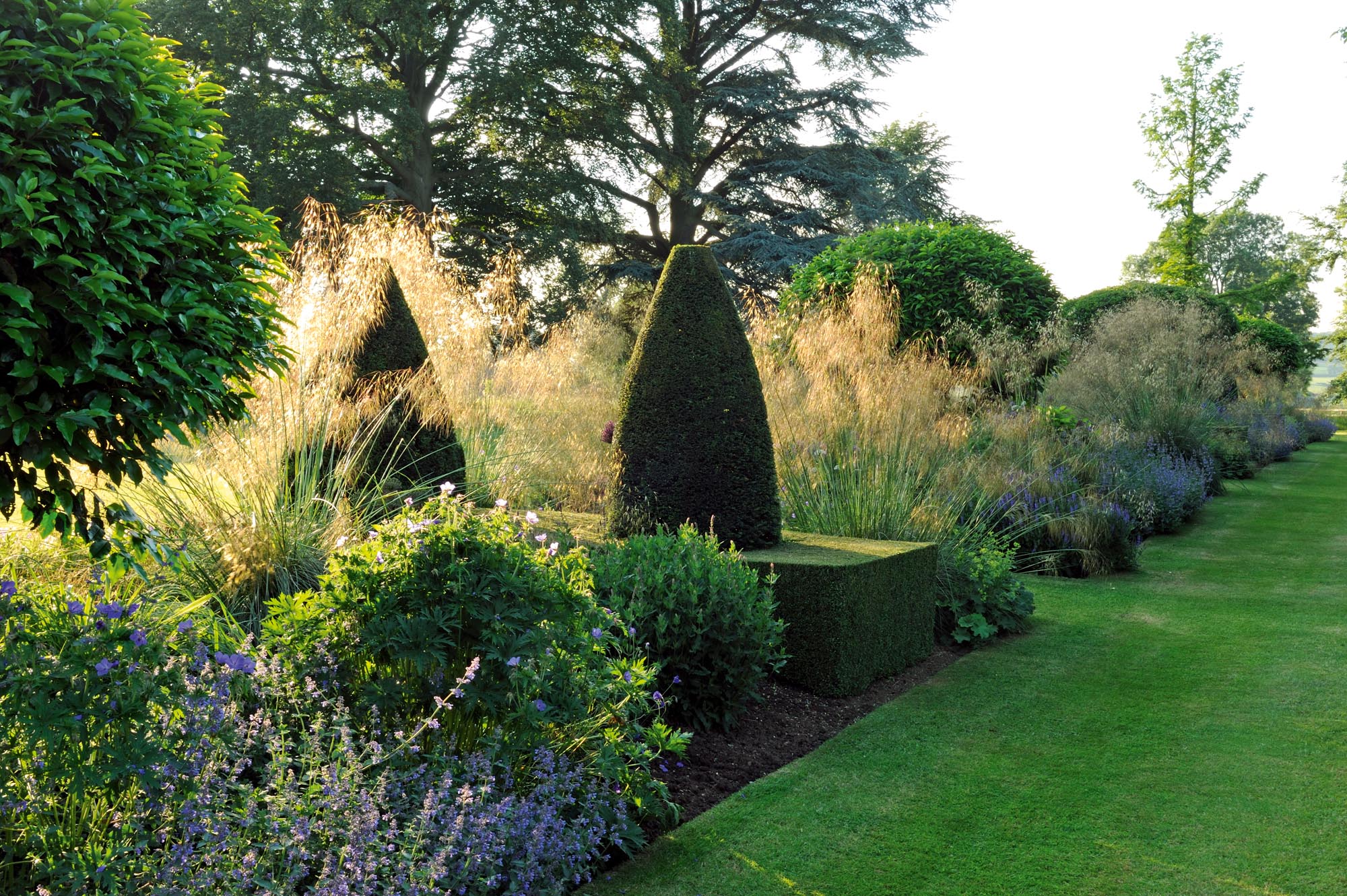
Beyond the borders, a gate leads to the new Arboretum. This former cricket pitch, which still has a low-slung pavilion at one corner, is now a special place where a restrained number of choice trees — it was Mr Coaker’s idea to select mostly oaks — have been planted. The central ‘square’ of the old cricket pitch is marked out with lime trees, but, otherwise, this has become a thoughtful, semi-formal space with mown paths through long grass.
Mrs Collins is keen to give Mrs Coaker the credit for much of the success at Everdon. Here is a wonderful example of a garden that reflects the passion and hard work of its owners, as much as it displays the surefooted understanding of the relationship of the house to the garden and the countryside beyond that is the hallmark of this designer’s work.
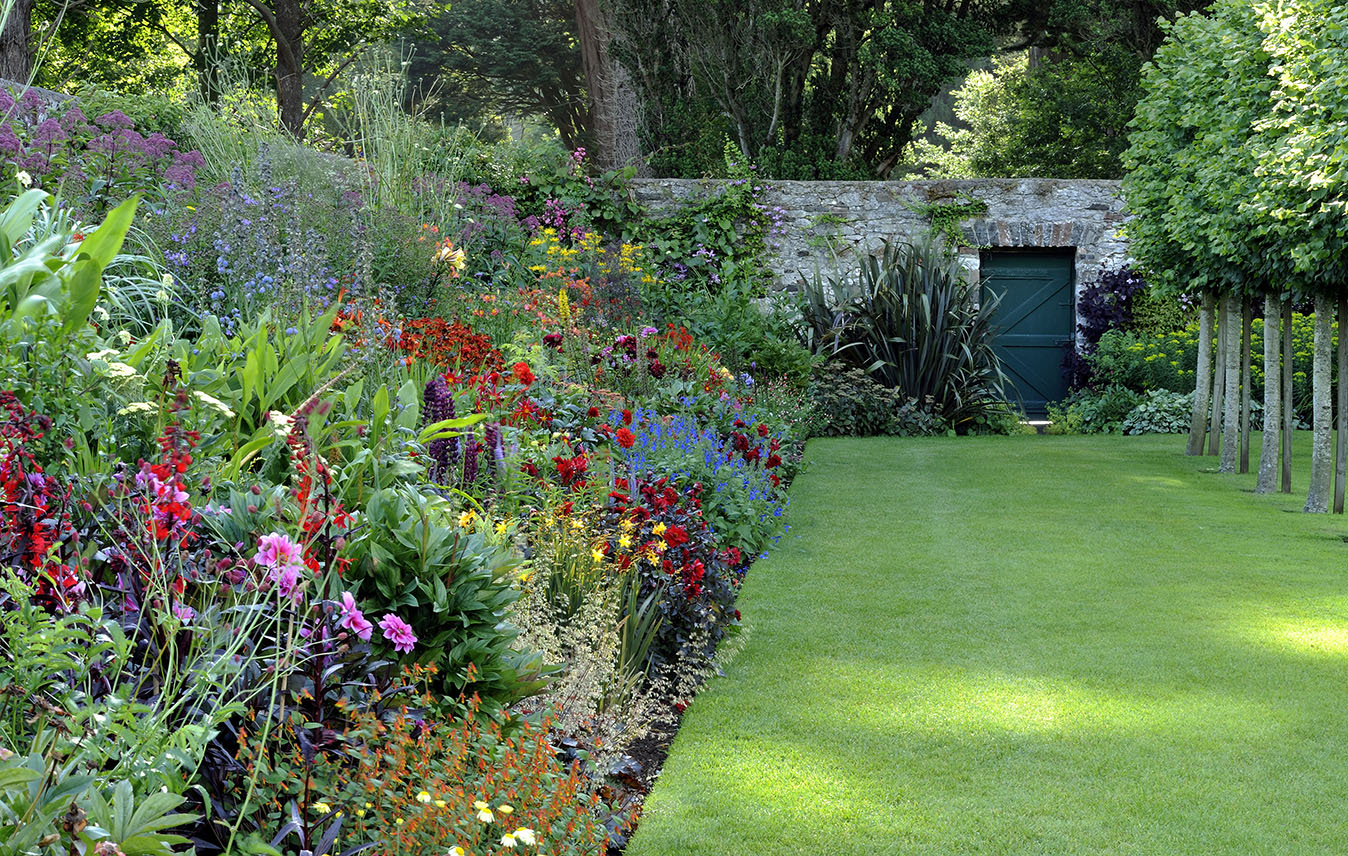
The walled garden at Glenarm Castle, full of surprising, exhilarating and fiery colours
Glenarm Castle's walled garden is a testament to the endless nurturing enthusiasm and creativity of those who care for it,
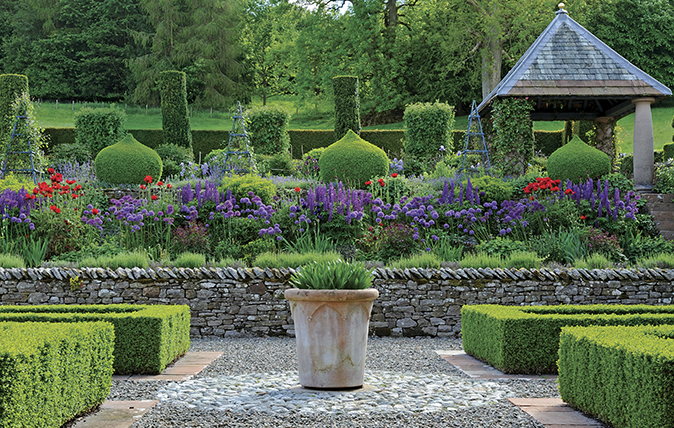
Warnell Hall, Cumbria: Where sympathy and experimentation go hand in hand
Non Morris is intrigued by the close attention to detail that has produced a new Cumbrian garden of great style
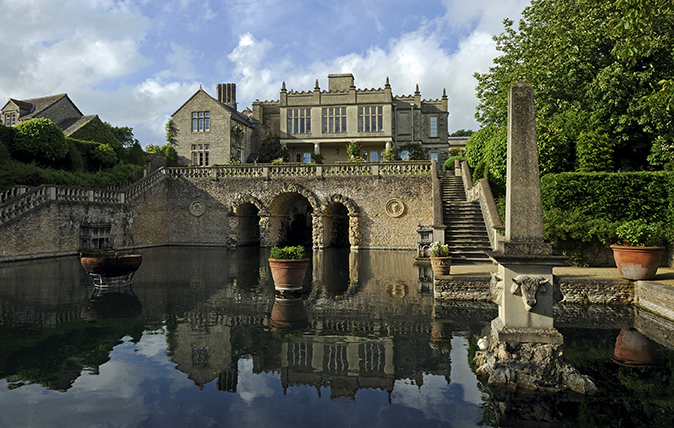
Credit: ©Val Corbett/Country Life Picture Library
Euridge Manor Farm, Wiltshire: A fairytale sense of fun, with a pool where rose petals gather
Non Morris is enchanted by the garden buildings, attention to detail and abundant planting in a recently made Wiltshire garden.
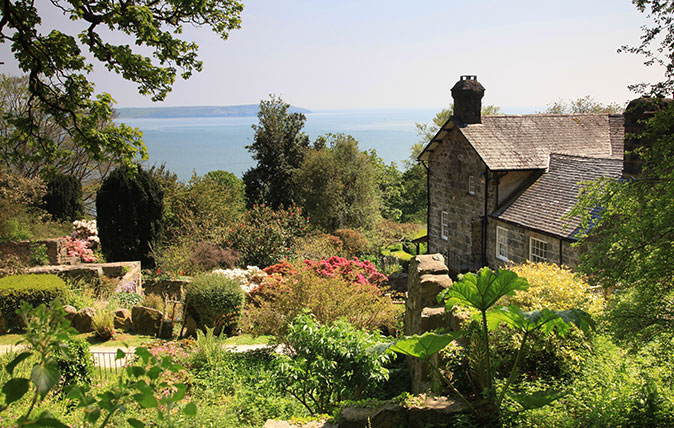
Credit: Plas yn Rhiw - National Trust
Plas yn Rhiw: An intoxicating Welsh garden that time forgot
Non Morris visited one of the most beautiful gardens in Wales, and came away utterly smitten.
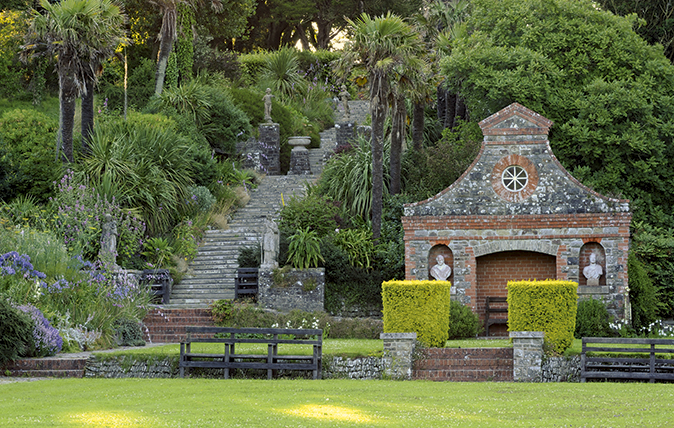
Tapeley Park: A Devonshire garden filled with dramatic flourishes at every turn
Non Morris discovers that experimentation, environmentalism and numerous dramatic flourishes invigorate this unusual Devonshire garden at every turn.
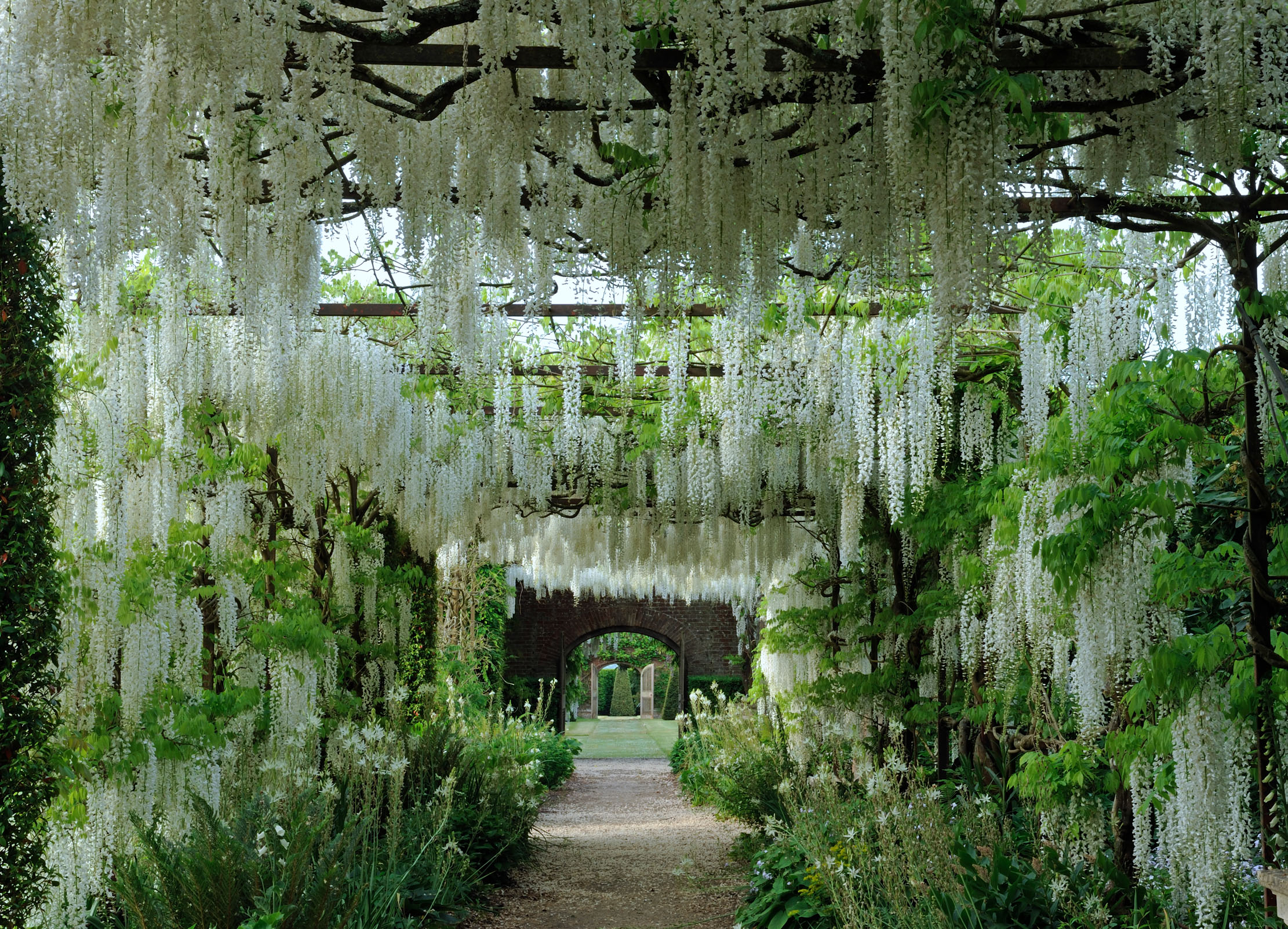
The secrets of the wisteria pergolas in the Private Gardens at Petworth House
The wisteria at Petworth's private garden is simply astonishing. Non Morris takes a look at how it's done.
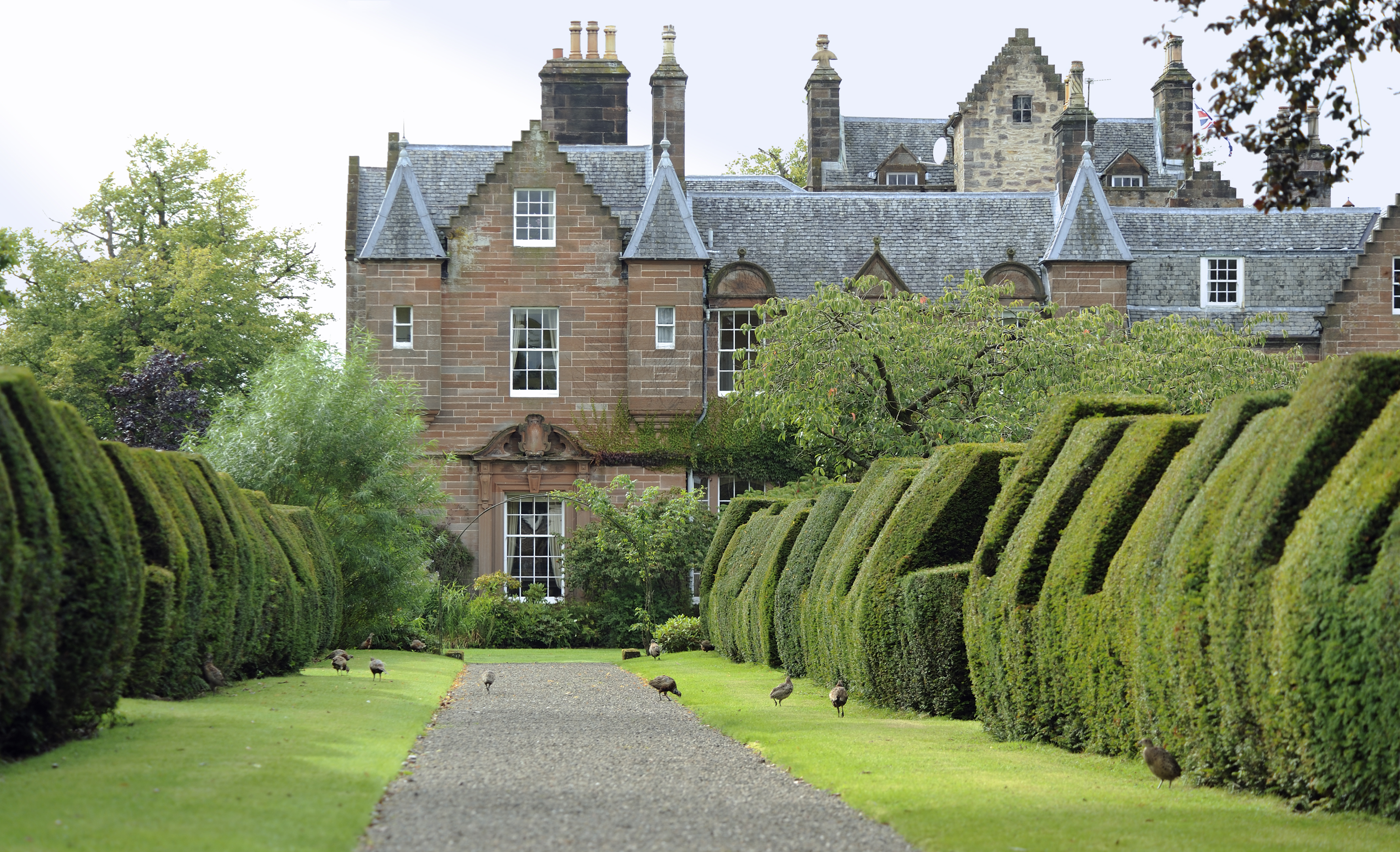
A legacy garden run by the same family since the 1300s, at the heart of a 2,000-acre Ayrshire estate
Generations of gardeners have left their mark on – and their plants in – this unique garden, says Non Morris.
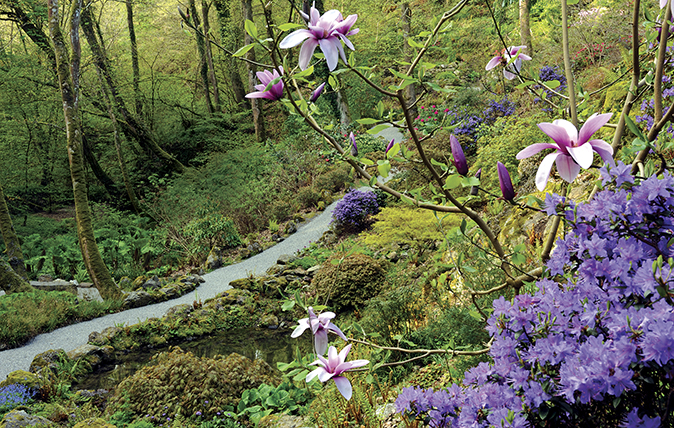
Credit: Val Corbett/©Country Life Picture Library
Plas Cadnant, Isle of Anglesey: The place where the heart rules
Non Morris is enchanted to learn about the twice-over extraordinary restoration of an Anglesey garden by its owner, who ‘fell
Country Life is unlike any other magazine: the only glossy weekly on the newsstand and the only magazine that has been guest-edited by His Majesty The King not once, but twice. It is a celebration of modern rural life and all its diverse joys and pleasures — that was first published in Queen Victoria's Diamond Jubilee year. Our eclectic mixture of witty and informative content — from the most up-to-date property news and commentary and a coveted glimpse inside some of the UK's best houses and gardens, to gardening, the arts and interior design, written by experts in their field — still cannot be found in print or online, anywhere else.
